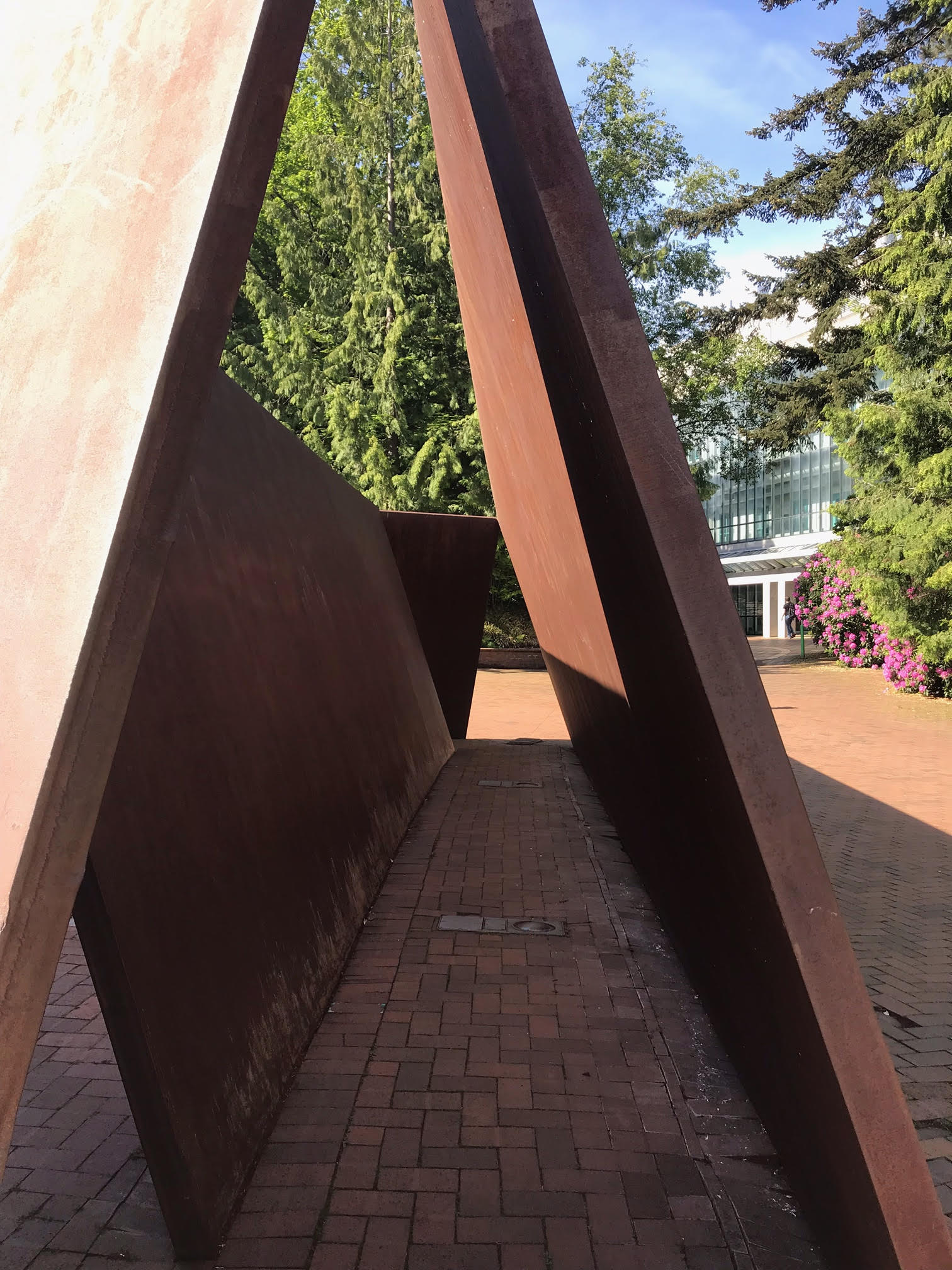
As mentioned in previous essays, Richard Serra’s sculptural work is concerned with space and its relationship to the human body — measuring oneself against form and void. Although his work always has a strong presence as an art object, to objectify his work misses the point. He develops works that are large enough to be occupied and experienced. The piece shown here entitled Wright ‘s Triangle (1979-1980) stands about 9’ tall and forms an equilateral triangle with 36’ long edges. The work is made of enormous 3” thick slabs of Corten steel, which seem to be balanced at the corners, suspending gravity, and creating a precarious, dynamic, perhaps dangerous impression. The tack welds at each corner, included for safety reasons, were an unfortunate and noticeable compromise.
Although Serra’s work is like architecture in that it is monumental and can be occupied — spatial in nature — he has been quite critical of the profession. He feels most architects see sculpture as something that should harmonize with the building and provide a decorative balance. In contrast and unburdened by function Serra’s work is a pure spatial experience. It took more than three years to select the site for this sculpture, which now sits in the center of a tree-lined pedestrian corridor on the campus of Western Washington University. Its location requires people to walk beside it, through it and around it. Its open corners invite the curious into its bowels where one’s gaze and focus are re-oriented. The triangular interior provides a surprising calm amidst a bustling campus – providing a moment to contemplate and reflect. Up lighting inset and flush with the surrounding pavers delivers a theatrical evening and late-night experience as well.
